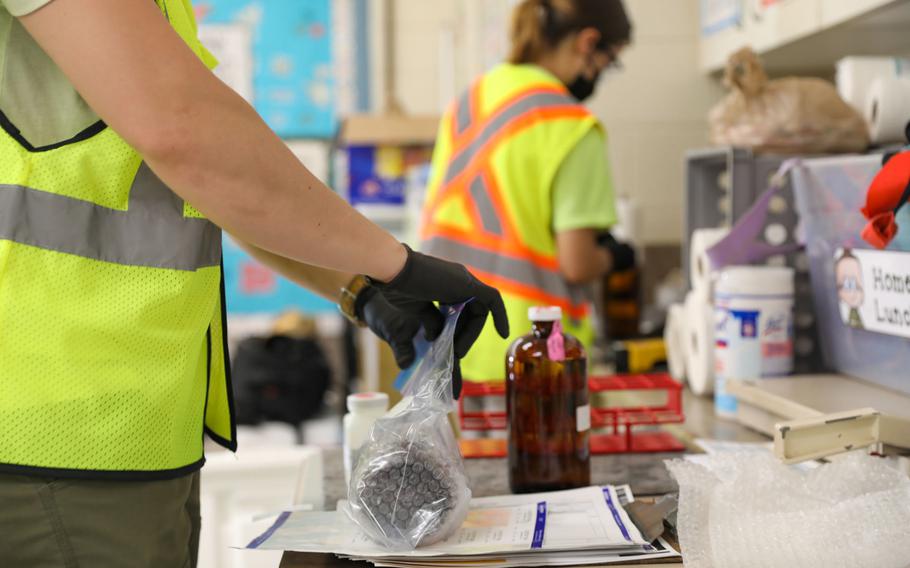
Navy contractors collect water samples as part of the Navy’s Drinking Water Long-Term Monitoring program at Admiral C. W. Nimitz Elementary School, Joint Base Pearl Harbor-Hickam, Hawaii on Feb. 6, 2024. (Krystal Diaz/U.S. Navy)
FORT SHAFTER, Hawaii – The Navy will extend by a year monitoring of its water distribution system at Joint Base Pearl Harbor-Hickam that had been contaminated with jet fuel in late 2021, the service said recently.
“We have made this deliberate decision as a result of our steadfast commitment to the people of Hawaii, our service members, civilians, contractors and their families.” Rear Adm. Stephen Barnett, commander of Navy Region Hawaii, said in a news release Saturday.
The Navy will begin voluntarily monitoring in April, which is when the original two-year testing period ends.
The testing was originally required by the Interagency Drinking Water System Team, whose members came from the U.S. Environmental Protection Agency, Hawaii Department of Health, Navy and Army.
The water sampling began in the wake of a 2021 jet fuel spill from Red Hill Bulk Fuel Storage Facility, a World War II-era underground collection of tanks located a few miles from the joint base.
The jet fuel seeped into the aquifer and contaminated one of three wells used by the Navy for its system that supplies water to roughly 93,000 residents of military housing communities on and near the joint base.
Thousands of residents were temporarily relocated to area hotels as the Navy sealed off the tainted well and flushed the entire system.
The Navy has tested more than 8,000 samples since monitoring began, the Saturday news release said. Testing results are posted at www.jbphh-safewaters.org.
The voluntary monitoring plan, which is under final review by EPA and the Hawaii Department of Health, will “implement a more investigatory approach to drinking water concerns, including low-level total petroleum hydrocarbon detections,” the news release said.
Total petroleum hydrocarbon, or TPH, refers to hundreds of compounds found in petroleum-based products.
Earlier this year, the Navy began looking into a spate of complaints by residents on the distribution system about tap water with a foul smell or sheen.
Testing found low levels of TPH that did not exceed the safe drinking water standard of 266 parts per billion. The TPH did not appear to originate from JP-5 jet fuel that had been stored at the Red Hill facility.
In early February, the Navy announced that it was “surging personnel, resources, and expertise” to further investigate the low levels of TPH.
Defense Secretary Lloyd Austin in March 2022 ordered Red Hill permanently closed.
Joint Task Force-Red Hill, the Defense Department entity tasked with emptying the facility, said in an update Monday that it had emptied 59,888 gallons of an estimated 60,000 gallons of residual fuel at the facility.
Residual fuel is what could not be drained via gravity and remains in low points in the pipelines.
Removal of residual fuel is expected to be completed this month, at which time Joint Task Force-Red Hill will dissolve.
A Navy task force, commanded by Barnett, will oversee closing the site and cleaning up any contamination caused by the facility.